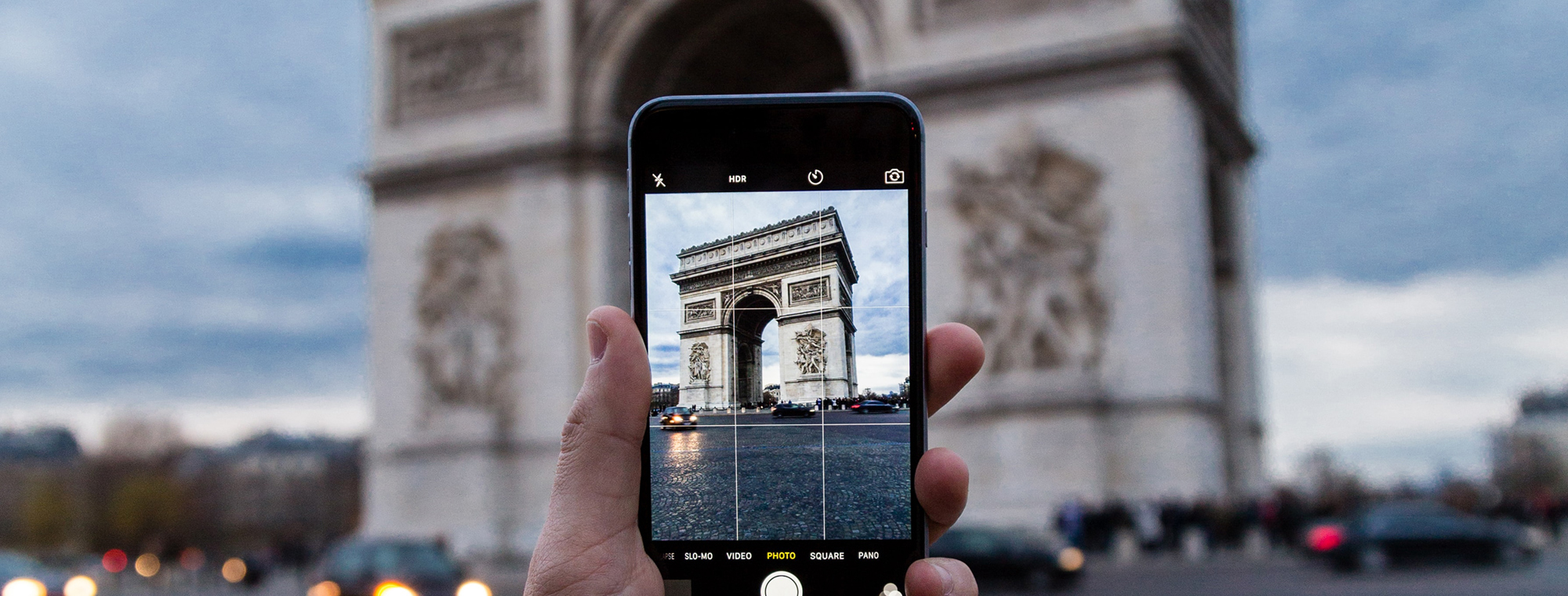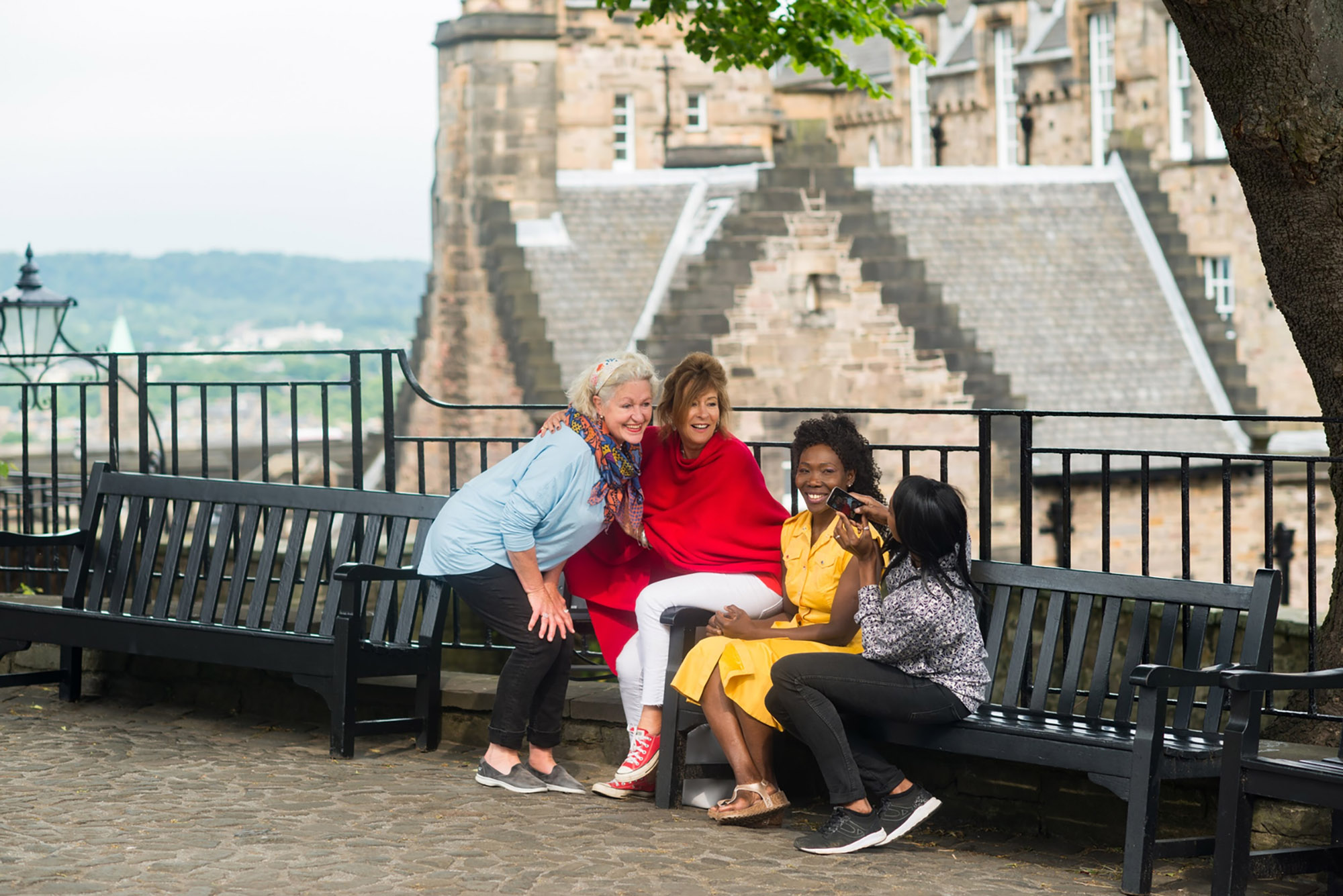Travel Photography
With a Smartphone

Your smartphone is a perfect way to quickly and conveniently capture the highlights of your next vacation. Use your own perspective, have fun, and you'll find new and unique ways to capture travel photos. Follow our helpful tips to improve your smartphone photography skills.
Smartphone Photography Tips
Keep Your Phone in Camera Mode and Your Hand
You really never know when the perfect picture might present itself, and you don’t want to miss it because you were fumbling to get your phone out of your pocket. You might even have a camera shortcut from your lock screen; try swiping up, down, left, or right to see what shortcuts show up! Just don't forget a portable charger. You never want to be low on batteries when trying to get that amazing shot.
As Much as Possible - Don’t Zoom
Zooming in can result in grainy or blurry images. If you feel like your subject is too small, get closer or crop the image later. Cropping will be your best friend later on.
Try Not to Use Your Phone's Flash
Using your flash tends to wreak havoc on a pictures' colors. Not to mention that most spiritual sites and museums strictly forbid flash photography. If you’re shooting in dim lighting or at night, look for sources of light in your environment – like streetlights and or store lights - and use those.
Keep the Sun to Your Back
Where ever possible, avoid direct sunlight, especially when shooting portraits. Harsh light will wash out your photos, and you will lose detail in dark shadows. If possible, ask your subject to move the shade for better pictures. If you can't avoid the sun, always keep it to your back for your best shot.

Smartphones With Cameras Are Everywhere
It has been estimated that in 2017 we took 1.3 trillion photos, 75% of which were taken with smartphones. But how many of those images were actually frame-worthy shots, and how many were deleted? Whether you’re shooting on a DSLR or your phone, following some general rules of composition can go a long way. Check out our article on Travel Photography to learn all about the rules of composition!
Travel Photography Tips & Tricks
Shoot Photos in Landscape Whenever Possible
Landscape means horizontal; portrait orientation is up and down. It is much easier to crop a landscape image into a portrait orientation than vice versa. Of course, if you're taking a picture in front of the Eiffel Tower, it probably calls for a portrait shot. If you want a close-up or found a fantastic way to frame your subject, it's entirely up to you how you'd like to position your camera. That's one of the best things about travel photography - everyone travels hoping to get those iconic shots, and they all turn out slightly different.
Practice Taking Photos Before You Go
Since phone cameras tend to come with smaller sensors, they are well suited for taking close-up shots. Experiment with capturing little things like the veins in a leaf, the intricate designs in marble, or the texture of a cobblestone street.
Try to shoot a range of subjects, including people, landscapes, food, and city scenes, to make more interesting photo albums down the line.
Even though it may feel strange at first, practice holding your phone with both hands to keep it as steady as possible. It also helps to take a breath, hold it, then take your photo! If you want to take it a step further, consider buying an inexpensive tripod for your phone.









